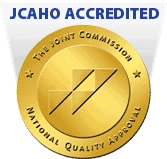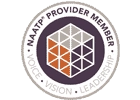Biofeedback Exercises for Addiction Treatment
When you decide that you’re ready to recover from addiction, many types of therapy may be included in your treatment plan. In combination with traditional therapeutic methods are more holistic or alternative forms of therapy. These types of therapy are helpful additions to anyone’s treatment plan as they can help with the processes of instilling life skills or addressing issues in the life of a person addicted to drugs or alcohol. One such therapy that has shown promising outcomes for addiction recovery is biofeedback therapy through biofeedback exercises.
Often, drugs are used as coping mechanisms. Therefore, therapy seeks to instill positive ways of dealing with life’s complications without turning to drugs for comfort.
Traditionally, therapies such as family therapy, group, or individual therapy are used to explore the issues in an individual’s life that are contributing to the need to turn to drugs. These types of therapy are all highly effective. However, some patients may find that the addition of biofeedback treatment and exercises helps to further facilitate stress management so they can stay sober and on the path towards life-long recovery.
What is Biofeedback Therapy?
Biofeedback therapy is a holistic approach to therapy that uses biofeedback exercises to treat a variety of substance disorders and conditions. This form of therapy allows a person addicted to drugs or alcohol to become aware of what is going on in his or her body.
Biofeedback therapy also allows individuals to make changes based on the information they receive from their awareness. Through biofeedback therapy, a person can not only learn what makes him or her stressed, but also learn how to control reactions due to stress.
When it comes to the benefits associated with biofeedback therapy, there are many. Some of the key benefits of biofeedback treatment include the following:
- Enhanced relaxation
- Improved sleep quality
- Increased self-awareness
- Reduction in anxiety and tension
- Improved stress management skills
All of these benefits can be extremely helpful for people that are recovering from addiction. When a person is dealing with addiction, he or she is often struggling with a great deal of stress and tension. That person may also have trouble sleeping and be highly anxious.
Biofeedback exercises can help to address all of these issues. This, in turn, can make the addiction recovery process much easier.
How is Biotherapy Administered?
In biofeedback treatment at rehab centers, patients wear sensors attached to their bodies which monitor everything from muscle tension to brain waves. These sensors send signals back to a computer which converts them into visual images or sounds that allow rehab patients to recognize when they’re becoming tense or anxious.
By recognizing symptoms of stress early on, rehab patients can learn how their bodies respond under stress. This, in turn, can help such patients begin making healthier life choices that will help make it easier for them to abstain from drug use.
Many different types of sensors are used to collect different kinds of physiological information on rehab patients during biofeedback treatment. These sensors can include:
- Electromyography (EMG): Used on muscles to monitor muscle tension and activity levels
- Thermal biofeedback: Measures skin temperature to show how the body is responding to stress.
- Galvanic Skin Response (GSR): Indicates subtle changes in skin resistance that can represent a person’s emotional state.
- Heart Rate Variability (HRV): Tracks the time between heartbeats and monitors any irregularities.
- Neurofeedback (EEG): Follows brain wave patterns to measure activity.
Then, once the data is collected, it is processed and turned into information that can be displayed on a screen or, alternatively, read aloud by a therapist. That therapist will then work with a patient to help him or her understand what the data means. Therapists will also work with rehab patients to help them discover how they can use biofeedback data to change their negative behaviors.
How Does Biofeedback Work?
Every action you take, from taking a step while walking to shaking hands with a colleague is controlled by you. When you make a conscious decision to do something, this is called a voluntary reaction. However, not every reaction is voluntary. The body often responds to environmental stimulation involuntarily, or automatically.
When someone is nervous, scared, or excited, they may find themselves experiencing involuntary reactions. These may include, increased heart rate, raised skin temperature leading to sweating, or elevated blood pressure.
You don’t think about raising your skin temperature or blood pressure, it happens automatically. Furthermore, these bodily functions are controlled by the central nervous system and may push some individuals to cope by turning to illicit substances, alcohol, or other drugs.
Through biofeedback exercises, rehab patients are assisted with gaining control over their involuntary reactions. Moreover, biofeedback therapy is considered to be a type of alternative medicine therapy.
Alternative medicine, or holistic therapies, are methods of treatment that do not rely on medications to treat different aspects of the mind and body. Therefore, in rehab facilities, biofeedback exercises may be offered as a complementary form of therapy for individuals recovering from addiction and not as a replacement for traditional therapies.
What Conditions Does Biofeedback Therapy Treat?
Biofeedback therapy is used to treat a variety of physical and mental conditions. By teaching patients how to control their bodily functions, which are typically involuntary, they main gain control over their addiction symptoms. For example, biofeedback therapy techniques can teach people with high blood pressure how to relax.
Biofeedback treatment can also be used to help people that suffer from mental illnesses such as anxiety disorders and depression by allowing them to monitor their conditions in real-time. That way they can learn how to control their mental illness symptoms.
Some other conditions that biotherapy can treat include:
- Insomnia
- Migraines
- Headaches
- Chronic Pain
- Hypertension
- Drug Addiction
- Substance Abuse
- Alcohol Use Disorder
- Traumatic Brain Injury
- Attention Deficit Disorder (ADD) and Attention Deficit Hyperactivity Disorder (ADHD)
Many people who suffer from drug or alcohol addiction also have issues with stress and anxiety. As a result, biofeedback therapy is especially useful in the treatment of people that suffer from co-occurring substance addictions and mental illnesses.
Under the guidance of a therapist, dual diagnosis patients may find that practicing biofeedback exercises helps them to control their anxiety and stress. This, in turn, helps them manage their addiction triggers.
Treatment Techniques Used in Biofeedback Therapy
The goal of biofeedback therapy is to help individuals achieve a state of relaxation and increased awareness of their bodies. Thus, biofeedback therapy can be very beneficial for people that are recovering from addiction. It helps to promote self-control and emotional stability, two of the most important factors in addiction recovery.
Biofeedback therapy works by teaching patients how to control their stress responses through relaxation techniques and other biofeedback exercises under the guidance of therapists. These therapists teach rehab patients ways that they can calm down when they feel nervous or stressed.
Learning such things can prevent an involuntary reaction that might cause a person to go back to misusing drugs or self-medicating with drugs as a way to cope with emotions. When an addiction treatment patient displays a stress reaction to the stimuli being presented, the following techniques are used to promote relaxation:
- Deep breathing exercises: A type of breathing done through the diaphragm which helps lower a patient’s heart rate.
- Progressive muscle relaxation: A technique that entails alternating between tightening and relaxing different muscles and muscle groups.
- Guided imagery: Patients are asked to focus on an image in their mind, exploring the colors or textures involved, to promote feelings of relaxation.
- Mindfulness meditation: This technique requires patients to let go of negative thoughts and slow racing ones during meditation.
Biofeedback Treatment for After One Experiences a Stress Reaction
Biofeedback treatment can also be useful because it provides patients with a safe space to explore their triggers and emotions. By practicing this type of relaxation and self-awareness, patients may gain insight into which types of situations or feelings lead them towards drug or alcohol abuse.
As a patient becomes more relaxed, that feedback will be shown on the device relaying stress information. This allows both the patient and therapist to see what relaxation techniques work best for an individual undergoing treatment.
How Long Do Biofeedback Treatment Sessions Last?
Biofeedback treatment sessions generally last around 30 minutes, but this may vary depending on the therapist’s preference and the patient’s needs. Some patients who require more intensive treatment may spend as long as 90 minutes in treatment sessions.
Since every addiction is different, the frequency of biofeedback treatment often depends on the following factors:
- The triggers involved
- The severity of symptoms
- The condition being managed
- How the body responds to treatment
The duration and frequency of biofeedback treatment sessions may also depend on how often a patient practices the relaxation techniques that he or she learned in biofeedback therapy. It can take about one week for a rehab patient to learn relaxation techniques and up to 12 weeks before biofeedback therapy begins to produce noticeable results.
Patients generally receive feedback about the biofeedback exercises that they are taking part in during their first sessions. Regular biofeedback treatment sessions though are required before individuals can begin practicing the exercises on their own.
Receiving Therapy Treatment for Drug and Alcohol Addiction with Harmony Place
Therapy, in general, can help individuals suffering from substance use disorders to maintain stability. This is important as stability is necessary for staying sober. Here at Harmony Place, we offer a wide range of addiction therapies. These include group psychotherapy for substance abuse, family therapy, individual addiction recovery therapy, and more.
If you or someone you love is suffering from a substance addiction, a treatment program that includes therapeutic intervention can help give you back the control over your life that you need. Our clinical addiction treatment programs utilize the structure provided through addiction therapy to facilitate learning, skill-building, and an exploration of the obstacles in life preventing sobriety. If you’re ready to work with a compassionate team of addiction specialists, contact us today.
References






